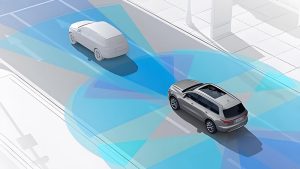LiDAR (Light Detection and Ranging) technology has become a critical component in the development of autonomous vehicles, providing high-resolution environmental data essential for safe and efficient navigation. Over the years, LiDAR technology has undergone significant advancements, transforming from a niche research tool into a key enabler of self-driving cars. This article explores the evolution of LiDAR technology in autonomous vehicles, highlighting key developments and future trends.

Early Developments in LiDAR Technology
LiDAR technology has its roots in the 1960s, originally developed for military and aerospace applications. Early LiDAR systems were large, expensive, and limited in their capabilities. They were primarily used for mapping and surveying, with applications in geology, forestry, and environmental monitoring.
In the early 2000s, the potential of LiDAR for autonomous vehicles began to be recognized. The technology’s ability to provide detailed 3D mapping and accurate distance measurements made it an attractive option for improving vehicle perception and navigation. However, the high cost and size of early LiDAR systems were significant barriers to widespread adoption.
Advancements in LiDAR Technology
1. Miniaturization and Cost Reduction
One of the most significant advancements in LiDAR technology has been the miniaturization of sensors. Early LiDAR systems were bulky and required substantial space, making them impractical for integration into vehicles. However, recent developments have led to the creation of smaller, more compact LiDAR units that can be easily integrated into vehicle designs.
In addition to miniaturization, the cost of LiDAR systems has decreased substantially. Advances in manufacturing techniques, materials, and technology have made LiDAR more affordable, bringing it within reach for broader applications, including autonomous vehicles. This cost reduction has been a key factor in the increasing adoption of LiDAR technology in the automotive industry.
2. Improved Performance and Resolution
LiDAR systems have also seen significant improvements in performance and resolution. Modern LiDAR sensors offer higher resolution and greater accuracy, providing more detailed and precise environmental data. This enhanced performance is crucial for autonomous vehicles, as it allows for better object detection, obstacle avoidance, and navigation.
Advancements in scanning technology, such as the development of multi-beam and solid-state LiDAR, have further improved performance. Multi-beam LiDAR systems use multiple laser beams to capture more data points, while solid-state LiDAR eliminates moving parts, increasing reliability and durability.
3. Integration with Other Technologies
The integration of LiDAR with other sensor technologies has been another important development. Combining LiDAR data with information from cameras, radar, and ultrasonic sensors creates a more comprehensive perception system. This sensor fusion approach enhances the overall accuracy and reliability of autonomous vehicle systems.
For example, LiDAR provides precise depth information, while cameras offer rich visual detail and radar provides distance measurements. Integrating these data sources allows for better object recognition, classification, and decision-making, contributing to safer and more effective autonomous driving.
4. Advances in Software and Algorithms
Alongside hardware advancements, there have been significant improvements in the software and algorithms used to process LiDAR data. Advanced algorithms enable real-time processing of LiDAR data, allowing autonomous vehicles to make rapid and accurate decisions based on their environment.
Machine learning and artificial intelligence techniques have also been applied to LiDAR data processing, improving the vehicle’s ability to recognize and interpret complex scenarios. These advancements contribute to more reliable and effective autonomous driving systems.
Future Trends in LiDAR Technology
1. Solid-State LiDAR
Solid-state LiDAR is expected to play a significant role in the future of autonomous vehicles. Unlike traditional LiDAR systems with moving parts, solid-state LiDAR uses electronic beam steering, which improves reliability and reduces manufacturing costs. This technology has the potential to make LiDAR more accessible and affordable for mass-market vehicles.
2. Enhanced Integration with Autonomous Systems
As autonomous driving technology continues to evolve, LiDAR will become increasingly integrated with other vehicle systems. Advanced sensor fusion techniques and improved software algorithms will enhance the vehicle’s ability to interpret and respond to complex driving scenarios.
3. Increased Focus on Safety and Redundancy
Future LiDAR systems are likely to place a greater emphasis on safety and redundancy. Ensuring that LiDAR systems can operate reliably under various conditions and providing backup systems to address potential failures will be crucial for achieving full autonomy and regulatory approval.
4. Expansion of Applications
Beyond autonomous vehicles, LiDAR technology is expected to find applications in other areas, such as smart infrastructure, robotics, and urban planning. The continued advancement of LiDAR will open up new opportunities for innovation and integration in various fields.
Conclusion
The evolution of LiDAR technology has been marked by significant advancements in miniaturization, cost reduction, performance, and integration. These developments have transformed LiDAR from a specialized research tool into a key component of autonomous vehicles. As technology continues to advance, LiDAR will play an increasingly important role in enhancing vehicle perception, safety, and overall performance. The future of LiDAR holds exciting possibilities, with ongoing innovations paving the way for new applications and capabilities in the world of autonomous driving.


